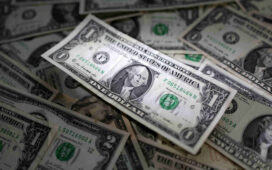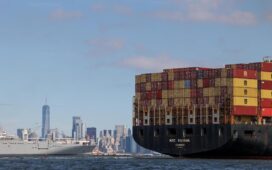THE Australian dollar sank to a near five-year low on Monday as the threat of a global trade war hit risk sentiment and currencies of countries with a heavy reliance on exports.
The Aussie slid 1.9 per cent to US$0.6091 breaking the January trough of US$0.6129. That took it to depths not seen since 2020 in the early days of the Covid-19 pandemic when it briefly neared US$0.5500.
The kiwi dollar fell almost 2 per cent to US$0.5527, breaching the January low at US$0.5539 and heading for the 2022 floor at US$0.5510.
Even though Australia and New Zealand were not directly targeted by US President Donald Trump’s tariffs, they have open economies that rely on free trade, particularly with their major export market China.
The Aussie is often used by investors as a liquid proxy for China risk and to hedge against movement in the yuan, which was quoted at a record low in early trade.
The mood was not helped by a survey showing China’s factory activity grew in January at a slower pace than in December.
BT in your inbox

Start and end each day with the latest news stories and analyses delivered straight to your inbox.
A protracted trade war would be a drag on Chinese and global growth, and thus a headwind for Australia which only reinforced market expectations of coming interest rate cuts.
Futures imply around a 95 per cent chance the Reserve Bank of Australia will cut its 4.35 per cent cash rate by a quarter point when its policy board meets on Feb 18.
Three-year bond futures climbed 6 ticks to 96.250 and tested a top from December.
Fallout from the trade war completely overshadowed Australian data showing retail sales dipped 0.1 per cent in December but handily topped market forecasts of a 0.7 per cent decline.
Sales volume rose a solid 1.0 per cent for the whole fourth quarter and will make a useful, if modest, contribution to economic growth.
“There continues to be uncertainty about whether the strong retail trade data reflect a sustained recovery in consumer demand or merely a pull-forward in expenditure in response to promotional activity,” said Abhijit Surya, an economist at Capital Economics.
“The upshot is that we don’t have the tentative recovery in consumer spending to prevent the Bank from cutting rates by 25bp at its meeting in mid-February.”
Likewise, investors are wagering the Reserve Bank of New Zealand will chop its 4.25 per cent rate by 50 basis points at its meeting on Feb 19. REUTERS




